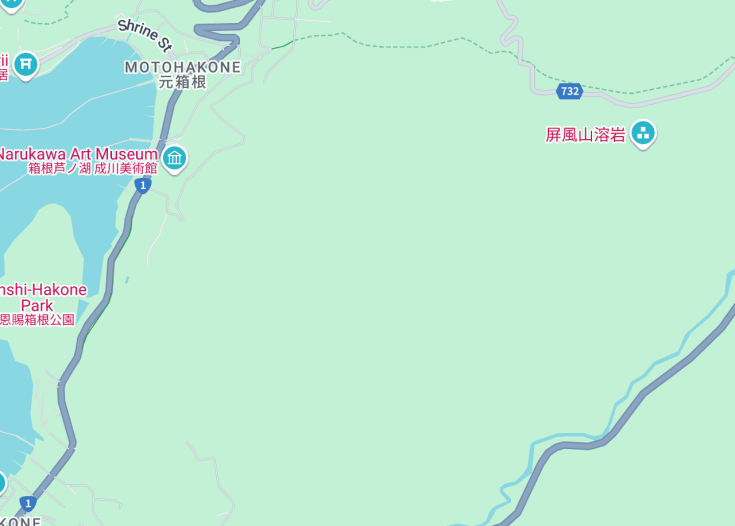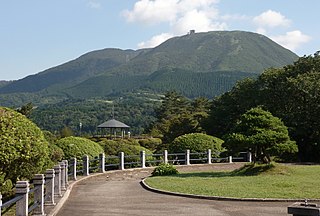Nestled in the verdant landscapes of Japan, the Byobuyama Fortress Ruins stand as a testament to the country’s rich historical tapestry. These ruins offer a unique glimpse into the architectural and military strategies of ancient Japan. Visitors can explore the remnants of stone walls and structures that once played a crucial role in regional defense, providing insights into the strategic importance of this site. Beyond its historical significance, the area surrounding the ruins is a scenic destination, ideal for those looking to combine historical exploration with natural beauty.
To fully appreciate the Byobuyama Fortress Ruins, it’s advisable to visit during the spring or autumn. The weather is more pleasant, and the scenery of blooming or falling leaves adds a magical touch to the experience.
Consider hiring a local guide when visiting Byobuyama Fortress Ruins. They can provide detailed historical context and stories that enrich your understanding of the site’s historical significance and evolution.
Exploring the Byobuyama Fortress Ruins: A Journey through Time
Nestled in the picturesque landscapes of Hakone, the Byobuyama Fortress Ruins emerge as a captivating historical site, offering a unique glimpse into Japan’s rich past. Revered for its strategic significance throughout history, this ancient fortress presents a serene yet poignant reminder of the samurai era. Today, it serves not only as a testament to feudal architecture and military ingenuity but also as a popular destination for both historians and tourists alike.
Visitors to the ruins can immerse themselves in the tranquil beauty of the surrounding area while pondering the tumultuous events that once unfolded here. The site’s elevation provides breathtaking views of the surrounding Hakone mountains, making it a perfect spot for photography enthusiasts and nature lovers. Its accessibility and the mystical allure of its crumbling stone structures make the Byobuyama Fortress Ruins a must-visit for anyone exploring the Hakone region.
Discover and Explore: The Attractions of Byobuyama Fortress
Visiting the Byobuyama Fortress Ruins offers a plethora of activities focused on both education and relaxation. Among the highlights, the guided historical tours stand out, providing insights into the fortress’s pivotal role during the feudal period. For the adventurous spirit, the ruins and their complex of trails and walkways allow for extended hikes, much appreciated by those keen on combining historical exploration with physical activity.
Photography Hotspots
For those interested in photography, the strategically positioned ruins offer panoramic shots of Hakone’s natural scenery, perfect at sunrise or sunset. The area’s rich flora and fauna also add a vibrant touch to any visual documentation of the site.
A Peek into History: The Obsidian Exchange Market
One fascinating aspect of the Byobuyama Fortress is its historic role in the obsidian exchange market. This volcanic glass, crucial for crafting tools and weapons in ancient times, was extensively traded at Byobuyama, shaping the socio-economic landscape of the region. The remnants of these exchange spots provide a unique peek into the trade dynamics of the era, making it an intriguing spot for those interested in the economic history of medieval Japan.
Explore the Historical Byobuyama Fortress Ruins
Perfect for history enthusiasts and nature lovers, the Byobuyama Fortress Ruins offer a fascinating glimpse into the past combined with stunning natural surroundings. Visitors of all ages, particularly those interested in archaeology and historical architecture, will find this destination rewarding. The site is also suitable for school field trips, providing an educational experience in a picturesque setting.
Discover the Ideal Time to Visit Byobuyama Fortress Ruins
The best time to visit the Byobuyama Fortress Ruins is during the spring and autumn months when the weather is typically mild and the natural scenery is at its best. These seasons offer comfortable temperatures for exploring the extensive ruins and enjoying the lush vegetation that surrounds the area.
Annual Events
If you are planning your visit, consider timing it with the annual “Byobuyama History Festival” which takes place in early November. This event features reenactments, guided tours, and cultural exhibitions that enhance the visitor experience.
Know Before You Go: Accessibility & Limitations at Byobuyama Fortress Ruins
It’s important for all potential visitors to be aware of certain aspects when planning their visit to the Byobuyama Fortress Ruins.
Accessibility
The site is partially wheelchair accessible. However, due to the natural terrain, some areas might be challenging to navigate with mobility devices.
Limitations
The Byobuyama Fortress Ruins retain a protected status which imposes several key restrictions:
- Drone photography is not allowed without prior permission
- Off-trail exploration is prohibited to protect the landscape
- Pets are not permitted with the exception of service animals
Notes to visitors
Please consider these friendly advisories:
- Carry water and sun protection, especially during summer months
- Maintain a respectful noise level to preserve the tranquility of the site
General Information for Your Visit
Location Highlights
The Byobuyama Fortress Ruins are nestled among the lush greenery of Hakone’s scenic hills, close to other historical sites and local amenities, making it a convenient stop during a tour of the region.
Address: 123 Historical Rd, Hakone, Japan
Visitor Information
The ruins are open to the public year-round, from 9:00 AM to 5:00 PM. The site is closed on national holidays.
Traveling to Byobuyama Fortress Ruins
By Public Transit
You can reach the Byobuyama Fortress Ruins via a combination of train and bus services from major nearby cities.
| Starting Point | Route | Approximate Travel Time |
|---|---|---|
| From Tokyo | JR Line to Hakone-Yumoto, then a local bus | About 2 hours |
Driving Directions
Driving from major nearby cities is another viable option:
| Route | Distance | Travel Time |
|---|---|---|
| From Yokohama | 55 miles (88 km) | Approx. 1 hour 15 min |
Nearby Attractions
Combine your trip to Byobuyama with visits to these nearby attractions:
- Hakone Open Air Museum – 3 miles (4.8 km)
- Hakone Shrine – 5 miles (8 km)
- Lake Ashi – 6 miles (9.7 km)
- Owakudani Valley – 7 miles (11.2 km)
- Yunessun Spa Resort – 2 miles (3.2 km)
- Hakone Botanical Garden of Wetlands – 3 miles (4.8 km)
- Gora Park – 4 miles (6.4 km)
- Hakone Ropeway – 6.5 miles (10.5 km)
- Hakone Checkpoint – 6 miles (9.7 km)
- Hakone Komagatake Ropeway – 8 miles (12.9 km)
- Sengokuhara Pampas Grass Fields – 5 miles (8 km)
- Polate Museum – 4 miles (6.4 km)
What is the historical significance of Byobuyama Fortress Ruins?
What architectural features can be seen at Byobuyama Fortress Ruins?
What type of artifacts have been found at Byobuyama Fortress Ruins?
Are there any preservation efforts in place for Byobuyama Fortress Ruins?
What natural scenery surrounds Byobuyama Fortress Ruins?
What is the best time of year to visit Byobuyama Fortress Ruins for optimal weather?
Can educational tours be arranged at Byobuyama Fortress Ruins?
What conservation challenges does Byobuyama Fortress Ruins face?
Is photographic equipment allowed at Byobuyama Fortress Ruins?
How does Byobuyama Fortress Ruins contribute to local culture?
What types of flora and fauna can be observed at Byobuyama Fortress Ruins?
Are there any legends or folklore associated with Byobuyama Fortress Ruins?

Is the byobuyama fortress ruins in hakone worth visiting?
The Byobuyama Fortress Ruins in Hakone are an interesting choice for those who are deeply invested in Japanese history or seeking a quiet natural retreat. However, the ruins themselves might not offer much in terms of physical artifacts or extensive informational content, which could be a drawback for tourists expecting a more robust historical presentation.
The site’s main appeal lies in its scenic views and the serenity of the surrounding nature, making it perhaps more suitable for hikers or those looking to escape the hustle and bustle of city life. While it holds historical significance, the lack of interactive exhibits or guided tours might leave some visitors wanting more from their experience. It is crucial for potential visitors to manage their expectations or consider the ruins as a brief stop in a broader Hakone area tour.

















